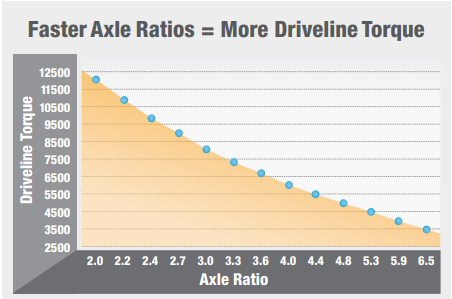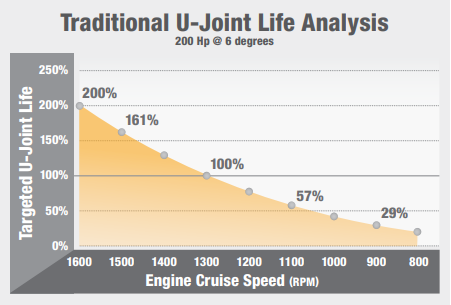philh wrote:
RoyJ wrote:
Wow, physics, hell I'll play :D
For any rigid shaft, torque in = torque out, correct? Basic Physics 101. Unless the shaft deforms, which is a failure...
3.31, 4.30, 4.88 truck, whatever, your max T-input at transmission is always your engine max torque, right? Assuming locked converter.
You axle torque is always dictated by your speed, grade, weight, aero, and instant acceleration. Doesn't matter if you have 3.31/4.30/3.55/4.88/5.13 gears. To pull a 40,000 gvw rig hp 7% grade with no wind at constant speed, you need a FIXED amount of axle torque (thrust), correct?
That means the ONLY difference in stress between a 3.31 and 4.30 truck is the transmission output torque, or driveshaft torque (again, T-in must = T-out). Because on the same hill, a 4.30 truck may be in 6th and the 3.31 truck in 5th.
If you're burning OD clutches, either you've gone above the GVW rating of the tranny, and /or you should've locked out OD.
Again, I don't know anybody pulling a heavy trailer that does WOT Launches. OEMs do extensive testing, including WOT runs on a dyno.
Which is why off the line is the only place the 4.30 truck has an advantage is "lower stress".
If the hill / weight is high enough, a 3.31 truck may require 100% throttle to get going, and the 4.30 truck 77%.
After that, with 10 spds to play with, you can always find a hill where the 3.31 truck in 3rd climbs it at slightly less throttle than a 4.30 truck in 4th. And vice versa.
In fact, if both trucks had perfect CVTs, a 3.31 and 4.30 truck would pull 2 equal hills, equal weight, at absolutely equal throttle %, rpm, and speed. The ONLY difference is driveshaft torque (4.30 truck is 77% less). Axle torque, transmission input shaft, would be IDENTICAL.


